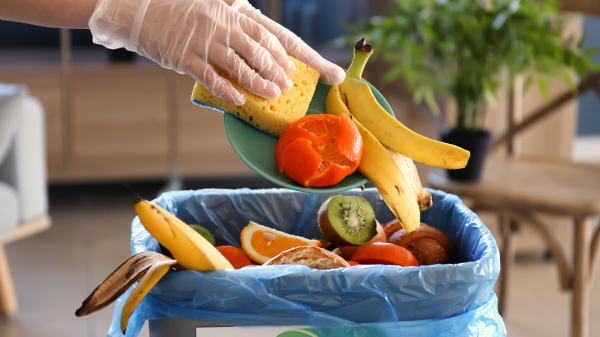Springfield, Mass., Nov. 14, 2023 (GLOBE NEWSWIRE) — Americans throw out a staggering 120 billion pounds of food each year. That’s 325 pounds per person, totaling an estimated 40% of the nation’s food production.
The single largest source of food waste in the U.S. comes from households (ReFED, 2016). While there isn’t one quick-fix solution for this massive problem, emerging research from the Michigan State University (MSU) School of Packaging sheds light on an oft-overlooked part of the waste reduction equation: everyday packaging.
According to Minding the Gap: Consumer Awareness of Packaging & Food Waste Reduction, a new white paper summarizing MSU’s research, there is much more than meets the eye when it comes to food packaging. Along with identifying the top food waste areas in households, the report explores how well consumers understand the purpose and function of packaging designed to reduce food waste and extend shelf life.

Fruits, Veggies, Dairy, and Leftovers Are Most Likely To Be Wasted
According to MSU’s study, fruits and vegetables, prepared foods, and dairy are the most frequently wasted food categories in American households. Fruits and vegetables accounted for 77% of waste, with bananas (32%), lettuce (25%), and strawberries (8%) discarded most frequently. Uneaten leftovers, half-eaten packaged products, and spoiled unpackaged food were also significant contributors to food waste.
Researchers found that consumers prefer packaging that helps them assess and extend the shelf life of food products, and that such packaging could further reduce household food waste.
Americans Do Not Waste Equally
The researchers also looked at demographic information, finding that both amounts of food waste and knowledge about packaging vary depending on age, income, and other factors. For example, younger survey participants tend to waste food most, and wealthier households (those with annual incomes over $100,000) throw out more food than those with lower incomes. Moreover, younger respondents are more willing to try new packaging solutions than older Americans.
Packaging Has Gotten Smarter, but Consumer Knowledge Lags Behind
Packaging materials, attributes, formats, and technologies have different purposes that uniquely contribute to food freshness. However, consumers frequently lack awareness and understanding of these aspects.
“While study participants showed some understanding about how packaging protects against physical damage, they had trouble identifying the best aspects of packaging for keeping different types of food fresh,” said Dr. Eva Almenar, the study’s lead researcher.
Participants also lacked knowledge of existing packaging technologies that harness science and technology to prolong shelf life for days or even weeks, including:
- Modified atmosphere packaging that can change the air composition inside the pack to slow ripening or stop the growth of organisms.
- Active packaging that interacts with the food product itself, for example, removing oxygen to slow the growth of bacteria.
- Intelligent packaging that monitors the conditions of food, like temperature, to give consumers real-time information about freshness and quality.
A Call for More Education
The study serves as a call for policymakers and industry to help better educate consumers about the role packaging can play in reducing food waste. According to the findings, boosting consumers’ awareness of packaging technologies could dramatically reduce food waste by helping them make smarter purchasing decisions based on packaging that provides the longest shelf life.
“If we can educate consumers more about the extensive economic and ecological benefits of packaging, they would factor it into their purchasing decisions at the grocery store,” said Dan Felton, Executive Director of AMERIPEN, the American Institute for Packaging and the Environment, which co-sponsored the study. “Together we can work to spread the word and help stave off food waste in the US.”
The study was also funded in part by the Environmental Research and Education Foundation (EREF). MSU was granted full academic freedom with their findings and will be releasing three peer-reviewed studies in the coming year. To download the summary white paper featuring the study results and more, visit ameripen.org.
AMERIPEN – the American Institute for Packaging and the Environment – is a coalition of packaging industry entities dedicated to improving packaging and the environment. They are the only material-inclusive packaging policy association in the United States representing the entire packaging value chain, including materials suppliers, packaging producers, consumer packaged goods companies and end-of-life materials managers. Their Vision is for packaging to be recognized for all its benefits, including preventing waste and driving a circular economy and their Mission is to be the leading voice for the packaging industry, using science to inspire, create and advocate for sustainable solutions for the packaging value chain. For more information, visit ameripen.org.
The Environmental Research & Education Foundation (EREF), founded in 1992, is a 501(c)3 class charity that advances scientific research and creates educational pathways that enable innovation in sustainable waste management practices in order to light the way towards a more circular economy.
It achieves this mission by facilitating unbiased, objective research and educational efforts via internal efforts, research grants, graduate level scholarships and education. In this respect, EREF is one of the largest sources of research and scholarships related to sustainable materials management across North America.
For more complete information on EREF funded research, its scholarship program and how to donate to this great cause, visit erefdn.org.
Michigan State University’s School of Packaging holds the prestigious reputation of being the first, the largest, and the most comprehensive packaging school in higher education. The School educates students to thrive in careers such as packaging engineering, design, manufacturing, research and development, and sales.
Their graduates can be found across most industries and global Fortune 500 companies, and their Ph.D. graduates teach at universities around the world. Students graduate with foundational knowledge across all aspects of packaging, positioning them to work in multiple capacities for top global companies. MSU SoP graduates have developed a strong alumni network, are leaders at all organizational levels, and are thought leaders shaping today’s sustainable packaging solutions.



